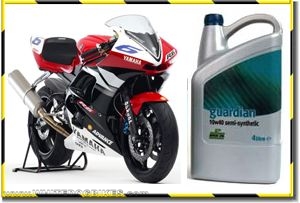2 and 4 stroke Engine Principles
The basic differences between the engines…
The main difference between 2 and 4 stroke engines is the way they use oil. As any 2 metal surfaces rub together (such as the piston and piston rings rubbing up and down against the cylinder barrel), friction is caused. This friction causes the metal parts to wear as they rub against each other. In order to minimise friction and wear on engine components, engines use oil as lubrication which provides a thin layer of protection between the metal surfaces.
2 Stroke Engines: In a 2 stroke engine, the fuel and air is mixed with 2 stroke oil, either pre mixed in the petrol tank or added automatically from a separate oil reservoir, the oil in the fuel and air mixture lubricates the cylinder, piston and piston rings, crankshaft and components. The 2 stroke oil is burnt with the fuel and air in the cylinder which produces a bluish tinge to the exhaust gases as well as that unique 2 stroke smell.
4 Stroke Engines: 4 stroke engines use an oil sump to lubricate the internal moving components of a motorcycle engine, which means there isn’t any need to mix oil with the fuel and air mixture. This generally produces better fuel economy and cleaner exhaust emissions. 4 stroke engines transport the oil around the engine from the oil sump (located at the bottom of a 4 stroke engine, the sump is a reservoir for the engine oil) to the moving engine parts using a series of passages in the engine casings and grooves, the oil is usually driven round the engine by an oil pump. 4 stroke engines use a ‘recirculating oil system’, which means the oil is driven, from the sump, by the oil pump, through an oil filter, around the engine and back to the sump to be used again.
Please click on either the 2 or 4 stroke links below to proceed
The links below are to pages that explain the basic operating principles of 2 and 4 stroke motorcycle engines



Leave a Reply